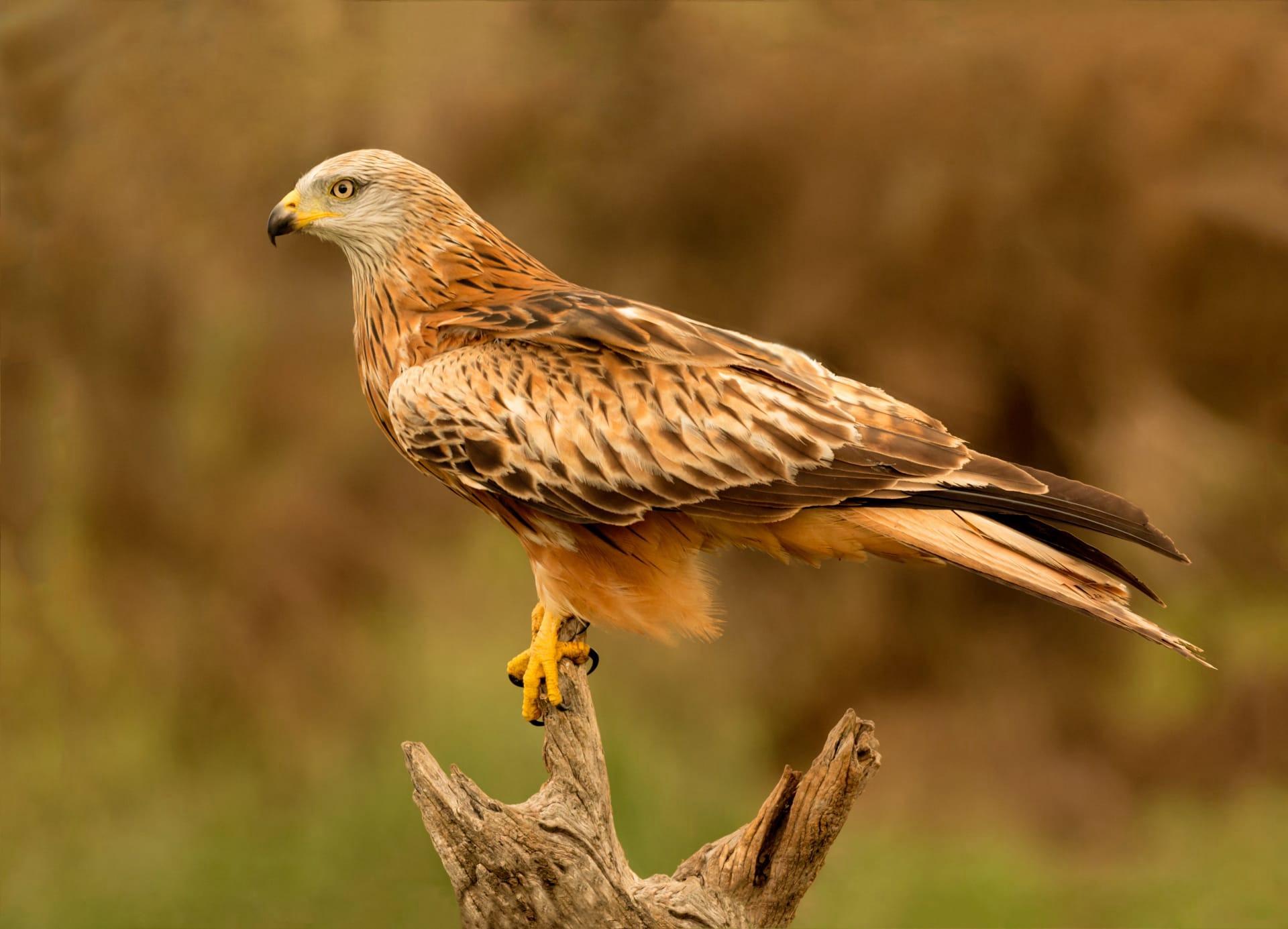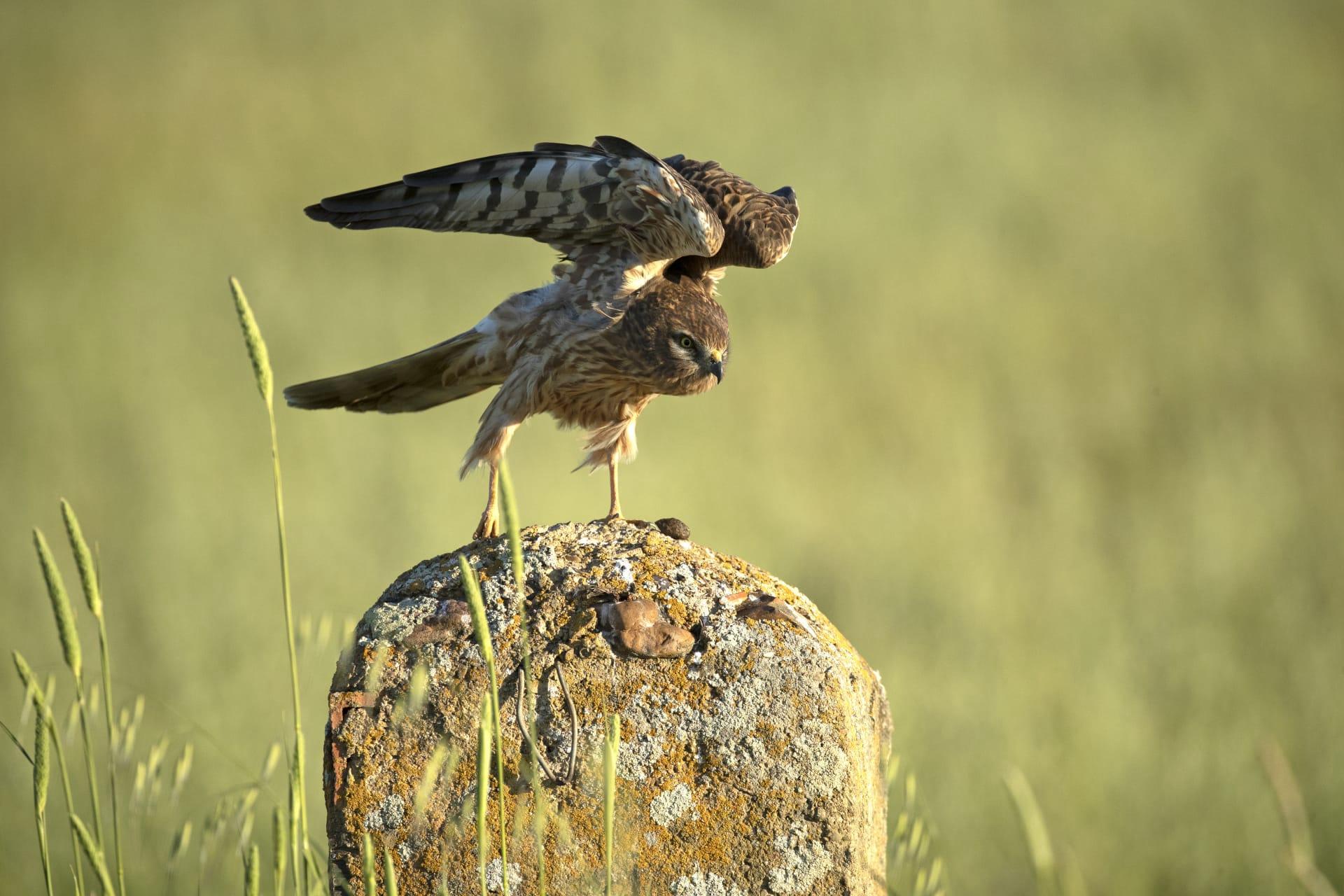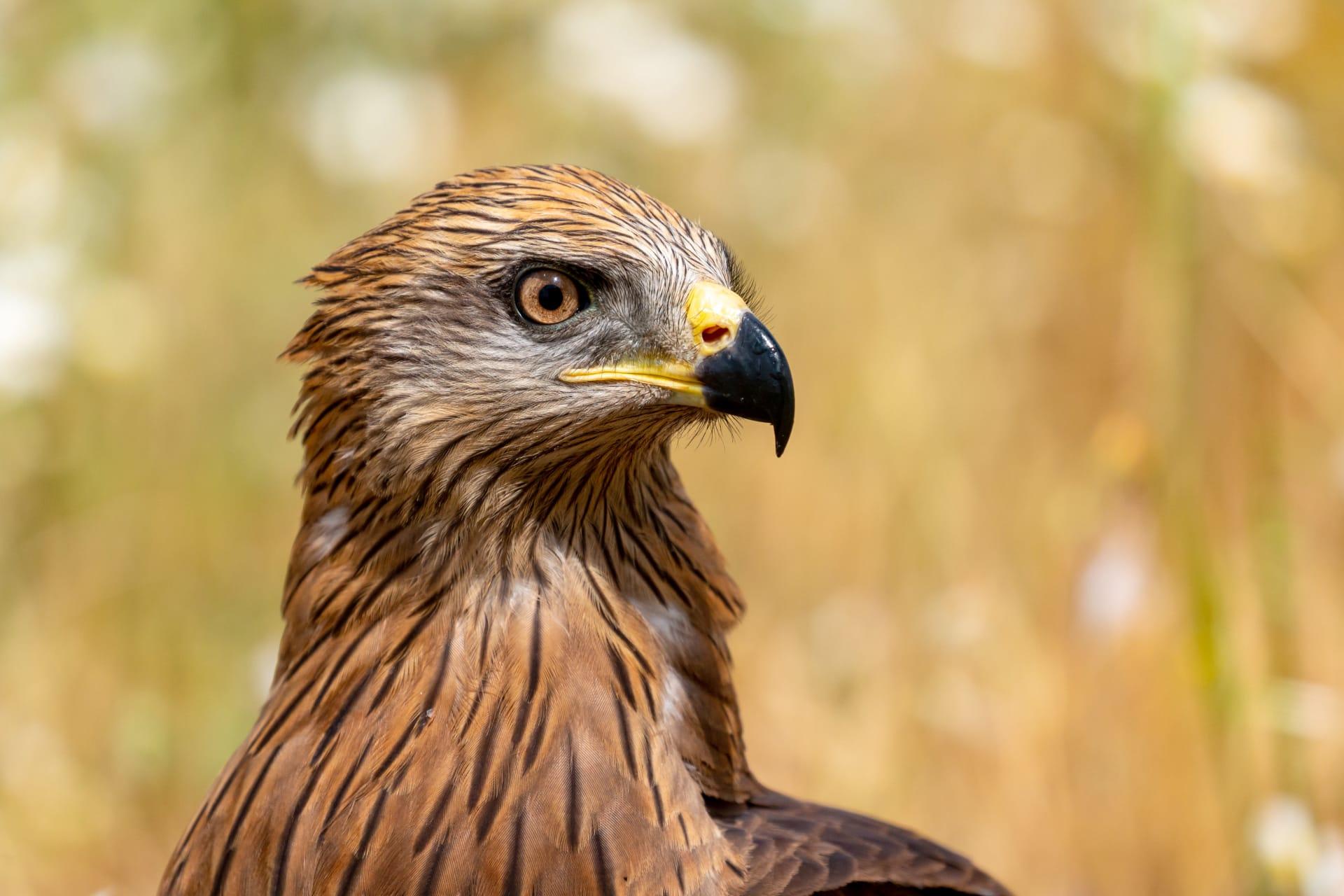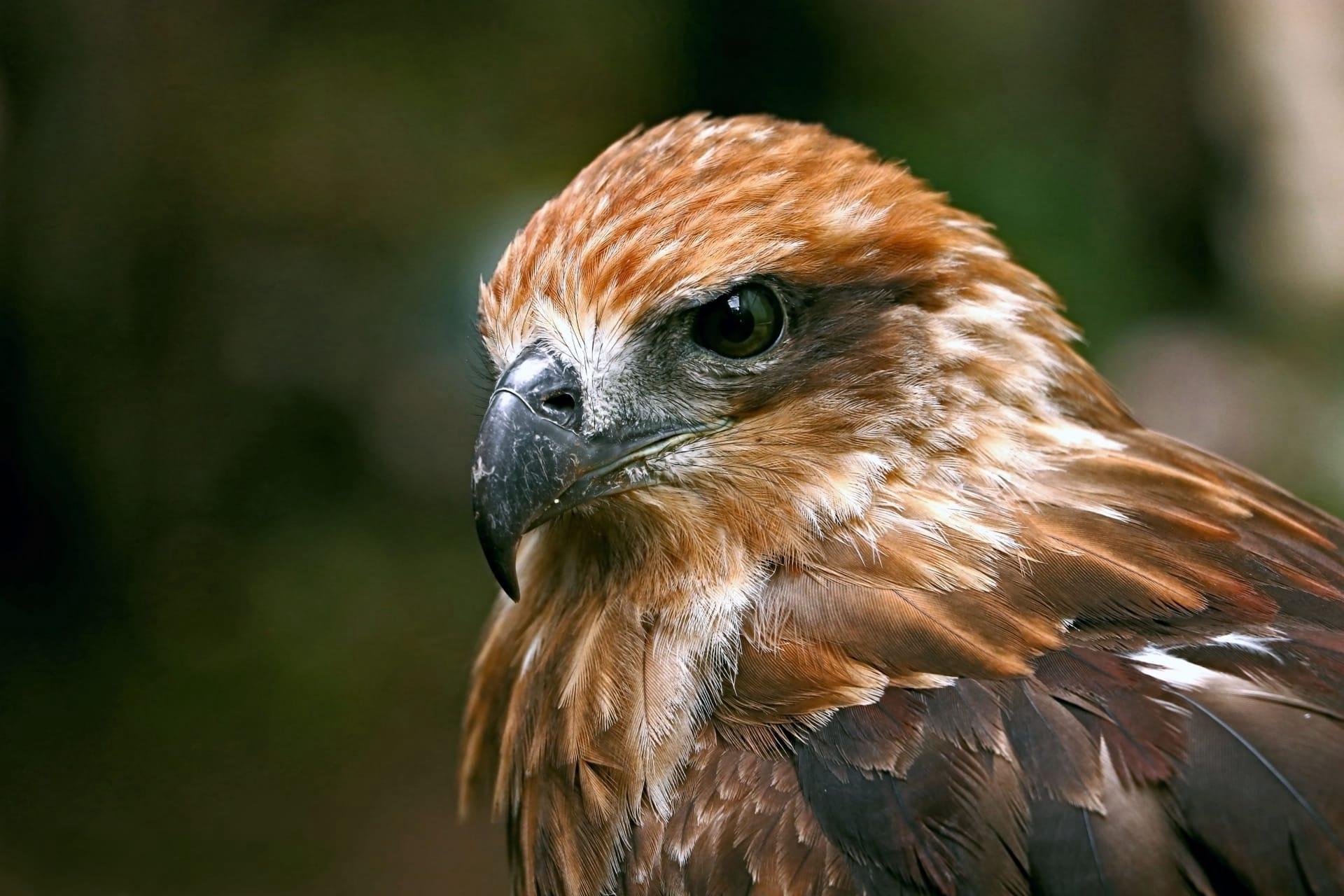1
Red-tailed Hawks, scientifically known as Buteo jamaicensis, are known for their remarkable vision. Their eyesight is about eight times more powerful than that of humans, allowing them to spot a mouse from a height of 100 feet (30 meters). This incredible vision is essential for their hunting strategy, which involves soaring high in the sky to scan vast areas for prey.
These birds of prey exhibit a fascinating behavior called "kiting," where they hover in the air against strong winds, almost motionless. This skill is not just a display of their strength and agility but also a strategic hunting method. By staying stationary in the air, they can conserve energy while keeping a keen eye on potential prey below.

2
The Red-tailed Hawk's tail, which gives the species its name, isn't red from birth. In fact, juveniles sport a brown, banded tail for their first year. It's only after their first molt, which occurs between one and two years of age, that they acquire the characteristic brick-red tail. This color change is a key indicator of maturity and plays a role in their mating rituals.
These raptors have a diverse diet, but they primarily feast on small mammals like voles, mice, and rabbits. Interestingly, their diet can vary greatly depending on their habitat and the availability of prey. In some regions, they may also prey on reptiles, birds, and even fish, showcasing their adaptability as predators.

3
Red-tailed Hawks are monogamous and often mate for life. During the courtship period, they perform a series of aerial displays, including a breathtaking dive from a great height, followed by a steep climb and a series of loops. This display not only strengthens their pair bond but also demonstrates the strength and vitality of the potential mate.
Known for their loud, piercing calls, Red-tailed Hawks are often heard before they are seen. Their distinctive cry, often described as a raspy, descending scream, is so iconic that it's frequently used in movies and TV shows to represent any eagle or hawk, regardless of the actual species being shown.

4
These hawks are highly adaptable when it comes to nesting. While they typically prefer tall trees, cliffs, or hills for their nests, they have also been known to nest on buildings, towers, and even billboards in more urban environments. This adaptability has allowed them to thrive in a variety of habitats, from deserts to forests.
The Red-tailed Hawk plays a crucial role in its ecosystem as a top predator. By controlling the population of rodents and other small animals, they maintain a balanced food web. Their presence indicates a healthy, functioning ecosystem, making them an important species for biodiversity.

5
Red-tailed Hawks have a broad wingspan, ranging from 45 to 52 inches (114 to 132 cm), which aids in their efficient soaring. The broad, rounded wings are perfectly designed for catching thermals – rising currents of warm air – which they use to gain altitude without much flapping. This soaring technique is energy-efficient and allows them to cover large areas with minimal effort.
Interestingly, Red-tailed Hawks have a varied plumage that depends on the region they inhabit. This phenomenon, known as geographic variation, results in different subspecies having distinct color patterns. For example, hawks in the western United States tend to have darker plumage compared to those in the east. This variation demonstrates the species' adaptability to different environments and aids in camouflage.